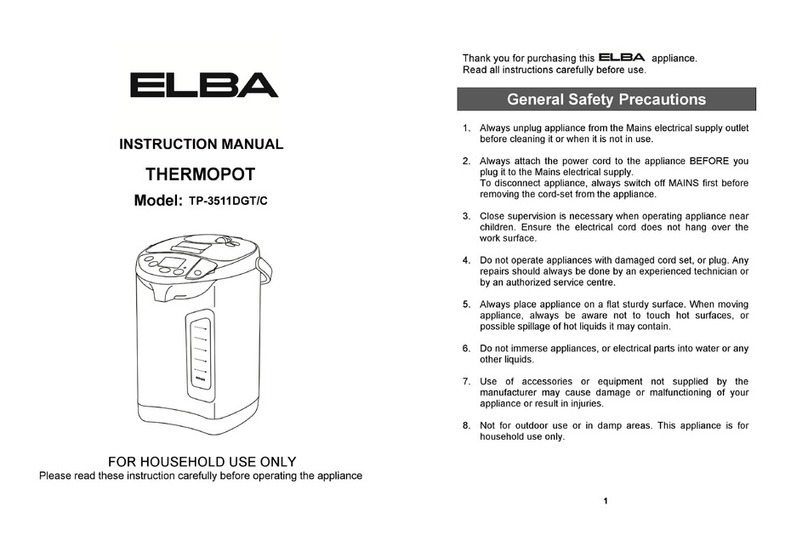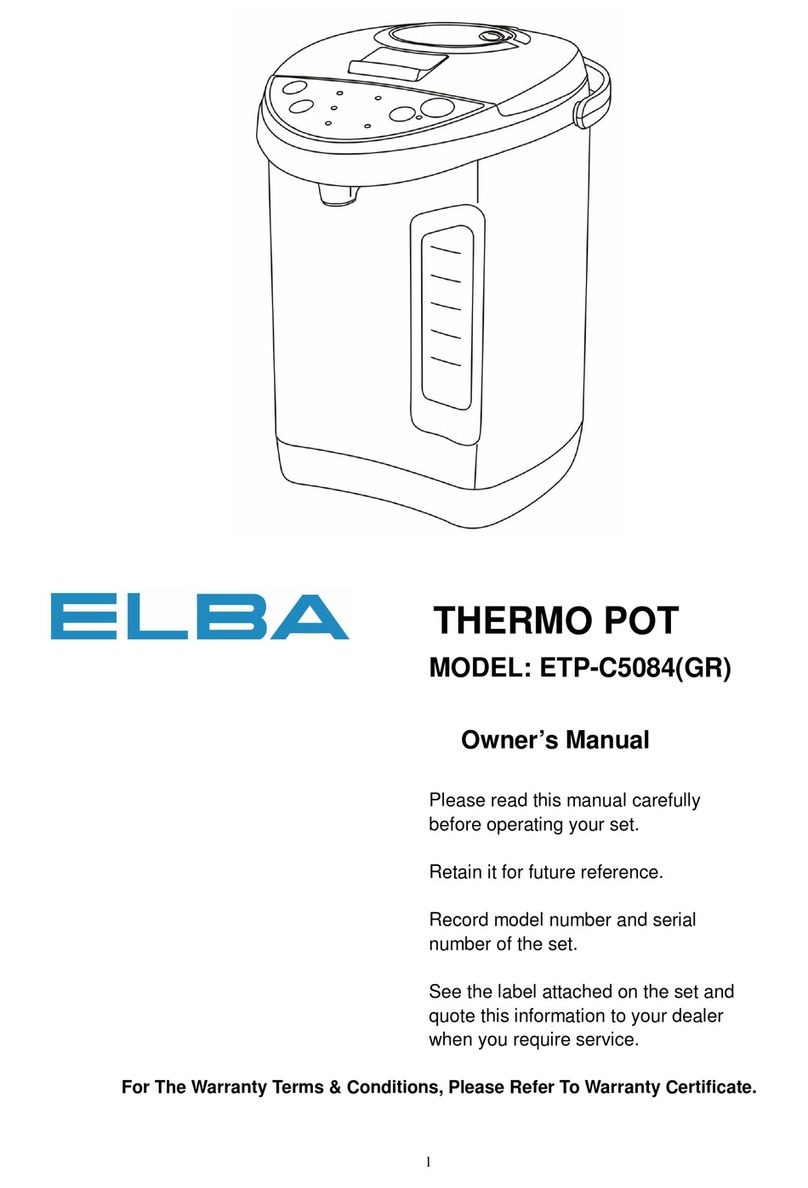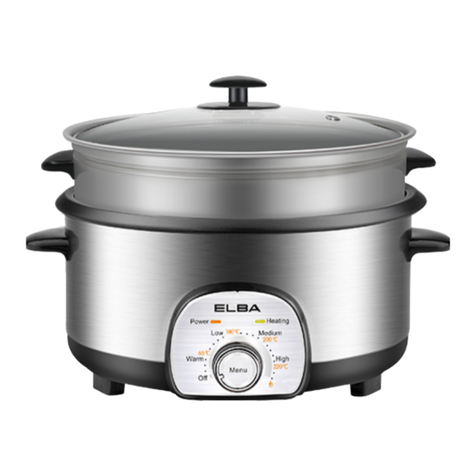Elba EEC 563 series User manual

Made in Italy
HOME APPLIANCES
100%
ELBA QUALITY
MADE IN ITALY
DUAL FUEL COOKERS
Models:
EEC 563 ..
Instructions for the use - Installation advices

2
Dear Customer,
Thank you for having purchased and given your preference to
our product.
The safety precautions and recommendations reported below
are for your own safety and that of others. They will also provide
a means by which to make full use of the features offered by your
appliance.
Please preserve this booklet carefully. It may be useful in futu-
re, either to yourself or to others in the event that doubts should
arise relating to its operation.
This appliance must be used only for the task it has expli-
citly been designed for, that is for cooking foodstuffs. Any
other form of usage is to be considered as inappropriate and
therefore dangerous.
The manufacturer declines all responsibility in the event
of damage caused by improper, incorrect or illogical use of
the appliance.

3
IMPORTANT SAFETY PRECAUTIONSAND RECOMMENDATIONS
IMPORTANT: This appliance is designed and manufactured
solely for the cooking of domestic (household) food and is
not suitable for any non domestic application and therefore
should not be used in a commercial environment.
The appliance guarantee will be void if the appliance is used
within a non domestic environment i.e. a semi commercial,
commercial or communal environment.
Read the instructions carefully before installing and using
the appliance.
• After having unpacked the appliance, check to ensure that it is
not damaged and that the oven door closes correctly.
In case of doubt, do not use it and consult your supplier or a
professionally qualied technician.
• Packing elements (i.e. plastic bags, polystyrene foam, nails,
packing straps, etc.) should not be left around within easy reach
of children, as these may cause serious injuries.
• Some appliances are supplied with a protective lm on steel and
aluminium parts. Thislmmustberemovedbeforeusingthe
appliance.
• IMPORTANT: The use of suitable protective clothing/gloves is
recommended when handling or cleaning this appliance.
• Do not attempt to modify the technical characteristics of
the appliance as this may become dangerous to use. The
manufacturer declines all responsibility for any inconvenience
resulting from the inobservance of this condition.
• CAUTION: this appIiance must only be installed in a permanently
ventilated room in compliance with the applicable regulations.
• Do not operate your appliance by means of an external timer or
separate remote-control system.
• Do not carry out cleaning or maintenance operations on the
appliance without having previously disconnected it from the
electric power supply.

4
• WARNING: Ensure that the appliance is switched off before
replacing the oven lamp to avoid the possibility of electric shock.
• Do not use a steam cleaner because the moisture can get into
the appliance thus make it unsafe.
• Do not touch the appliance with wet or damp hands (or feet).
• Do not use the appliance whilst in barefoot.
• If you should decide not to use this appliance any longer (or
decide to substitute another model), before disposing of it, it
is recommended that it be made inoperative in an appropriate
manner in accordance to health and environmental protection
regulations, ensuring in particular that all potentially hazardous
parts be made harmless, especially in relation to children who
could play with unused appliances.
• Thevariouscomponentsoftheappliancearerecyclable.Dispose
oftheminaccordancewiththeregulationsinforceinyourcountry.
If the appliance is to be scrapped, remove the power cord.
• After use, ensure that the knobs are in the off position.
• Children less than 8 years of age shall be kept away unless
continuously supervised.
• This appliance can be used by children aged from 8 years and
above and persons with reduced physical, sensory or mental
capabilities or lack of experience and knowledge if they have
been given supervision or instruction concerning use of the
appliance in a safe way and understand the hazards involved.
Children shall not play with the appliance. Cleaning and user
maintenance shall not be made by children without supervision.
• The manufacturer declines all liability for injury to persons or
damage to property caused by incorrect or improper use of the
appliance.
• WARNING: During use the appliance and its accessible parts
become hot; they remain hot for some time after use.
– Care should be taken to avoid touching heating elements (on
the hob and inside the oven).
– The door is hot, use the handle.

5
– To avoid burns and scalds, young children should be kept
away.
• Make sure that electrical cables connecting other appliances in
the proximity of the cooker cannot come into contact with the hob
or become entrapped in the oven door.
• WARNING: Unattended cooking on a hob with fat or oil can be
dangerous and may result in re. NEVER try to extinguish a re
with water, but switch off the appliance and then cover ame e.g.
with a lid or a re blanket.
• WARNING: Danger of re: do not store items on the cooking
surfaces.
• WARNING: When correctly installed, your product meets all
safety requirements laid down for this type of product category.
However special care should be taken around the rear or the
underneath of the appliance as these areas are not designed or
intended to be touched and may contain sharp or rough edges,
that may cause injury.
• FIRST USE OF THE OVEN - it is advised to follow these
instructions:
– Furnish the interior of the oven as described in the chapter
“CLEANING AND MAINTENANCE”.
– Switch on the empty oven on max to eliminate grease from the
heating elements.
– Disconnect the appliance from the electrical power supply, let
the oven cool down and clean the interior of the oven with a
cloth soaked in water and neutral detergent; then dry carefully.
• CAUTION: Do not use harsh abrasive cleaners or sharp metal
scrapers to clean the oven door glass since they can scratch the
surface, which may result in shattering of the glass.
• Donotlinethe ovenwalls withaluminiumfoil.Donotplacebaking
trays or the drip tray on the base of the oven chamber.
• FIRE RISK! Do not store ammable material in the oven.
• Always use oven gloves when removing the shelves and food
trays from the oven whilst hot.

6
• Do not hang towels, dishcloths or other items on the appliance or
its handle – as this could be a re hazard.
• Clean the oven regularly and do not allow fat or oils to build up in
the oven base or tray. Remove spillages as soon as they occur.
• Do not stand on the cooker or on the open oven door.
• Always stand back from the appliance when opening the oven
door to allow steam and hot air to escape before removing the
food.
• SAFE FOOD HANDLING: Leave food in the oven for as short
a time as possible before and after cooking. This is to avoid
contamination by organisms which may cause food poisoning.
Take particular care during warmer weather.
• WARNING: Take care NOT to lift the cooker by the door handle.

7
GAS BURNERS
1. Auxiliary burner (A) 1,00 kW
2. Rapid burner (R) 3,00 kW
3. Semi-rapid burner (SR) 1,75 kW
Fig. 1.1
Fig. 2.1
CONTROLS DESCRIPTION
1. Rear right burner control knob
2. Front right burner control knob
3. Front left burner control knob
4. Rear left burner control knob
5. Electric oven/grill control knob
6. Gas burners electronic igniter pushbutton
7. Oven light/Rotisserie control button
8. Electric oven/grill indicator light
12345 6
7
8
1
3
2
3
COOKING HOB
1
CONTROL PANEL
2

8
Caution!
The cooking hob becomes very hot
during operation.
Keep children well out of reach.
N.B. When the cooker is not being
used, set the gas knobs to their closed
positions and also close the cock val-
ve on the gas bottle or the main gas
supply line.
Fig. 3.1
Fig. 3.2
Each burner is controlled by a gas tap (g.
3.1) assuring the opening and the closing
of the gas supply.
Make the knob symbols match with the in-
dicator on the control panel to obtain:
• symbol : off
• symbol : full on (nominal rate)
• symbol : reduced rate
√The maximum aperture position per-
mits rapid boiling of liquids, whereas
the minimum aperture position allows
slower warming of food or maintaining
boiling conditions of liquids.
√To reduce the gas ow to minimum,
rotate the knob further anti-clockwise
to point the indicator towards the small
ame symbol.
√Other intermediate operating
adjustments can be achieved by posi-
tioning the indicator between the maxi-
mum and minimum aperture positions,
and never between the maximum
aperture and closed positions.
Intheeventoftheburneramesbeing
accidentally extinguished, turn off the
burner control and do not attempt to
re-ignite the burner for at least 1 min.
CONTROL PANEL
3

9
CHOICE OF THE BURNER
On the control panel, near every knob, the-
re is a diagram that indicates which burner
is controlled by that knob.
The suitable burner must be chosen ac-
cording to the diameter and the capacity
used.
As an indication, the burners and the pots
must be used in the following way:
DIAMETERS OF PANS WHICH MAY
BE USED ON THE BURNERS
BURNERS MINIMUM MAXIMUM
Auxliliary 12 cm 14 cm
Semi-rapid 16 cm 24 cm
Rapid 24 cm 26 cm
Wok pan Max 36 cm
do not use pans with concave or con-
vex bases
It is important that the diameter of the pot
be suitable to the potentiality of the burner
so as not to compromise the high output
of the burners and therefore energy waste.
Asmall pot on a large burner does not give
you a boiling point in a shorten amount of
time since the capacity of heat absorption
of a liquid mass depends on the volume
and the surface of the pot.
Fig. 3.4
Fig. 3.3
LIGHTING THE BURNERS
To ignite the burner, the following instruc-
tions are to be followed:
1. Press in the corresponding knob and
t
urn counter-clockwise (g. 3.2 )
to the
full ame position marked by the
(full on) symbol (g. 3.1).
2. Press the ignition button marked by
the symbol (g. 3.3).
The sparks produced by the electro-
des situated next to the burner will
light the selected burner.
In the case of a mains failure light the
burner with a match or lighted taper.
3. Adjust the gas valve to the desired po-
sition.
To turn it off, turn the knob towards the
right, up to the safety click.
If your local gas supply makes it difcult to
light the burner with the knob set to maxi-
mum, set the knob to minimum and repeat
the operation.

10
CORRECT USE OF RAPID BURNER
The at-bottomed pans are to be placed directly onto the pan-support.
When using a WOK you need to place the supplied stand in the burner to avoid any faulty
operation of the rapid burner (Fig. 3.5a - 3.5b).
IMPORTANT:
The special grille for wok pans (g. 3.5b) MUST BE PLACED ONLY over the pan-rest for
the rapid burner.
WRONG CORRECT
Fig. 3.5a Fig. 3.5b

11
0
1
2
3
4
5
6
7
8
9
10
Fig. 4.1 Table 4.2
NATURAL CONVECTION ELECTRIC OVEN
4
The glass of the oven door reaches
high temperatures during operation.
Keep children away.
The cooker lid must be kept open when
the oven or the grill is in use.
ELECTRICAL THERMOSTAT
Turn on the oven or grill element by turning
the switch that is also provided with a ther-
mostat to control the oven temperature.
On the knob (g. 4.1), other than the “0”
position (off), are numbers “1to 10” which
indicate the oven temperature value with
the temperature increase according to the
number (see table 4.2).
The position serves only for grilling
with the oven door slightly open and with
the protection shield for the control panel
mounted.
The switch/thermostat symbols indicate:
• Position “0”= off
• Position from “1to 10” = simultaneous
operation of the 2 elements (upper
and lower). The numbers correspond
to the temperature shown in the table
4.2. The elements will turn on and off
automatically depending on the tem-
perature required commanded by the
thermostat.
• Position = grill element in opera-
tion without temperature control (see
specic paragraph).
The automatic turning on and off of the
elements is signalled by a light above the
knob.
GENERAL FEATURES
The oven is furnished completely clean; it is
advisable, however, upon rst use, to turn
the oven on to the maximum temperature
for about 15 minutes to eliminate possible
traces of grease on the heating elements.
The oven is equipped with 3 electrical hea-
ting elements:
• 2 elements (upper and lower) for nor-
mal oven cooking;
• 1 grill element, on the top of the oven,
for grilling which must be done with the
oven door slightly open and with the
protection shield for the control panel
mounted.
The input of the element is:
• upper element, 960 W;
• lower element, 1340 W;
• grill element, 1900 W.

12
WARNING:
The door is hot, use the handle.
During use the appliance becomes hot.
Care should be taken to avoid touching
heating elements inside the oven.
USE OF THE GRILL
Very important: The grill must always be
used with the oven door slightly open
andwithshield“A”mounted(g.4.3).
Mount shield “A” which permits to protect
the control panel from the heat.
Turn on the grill, as explained in the prece-
ding paragraphs and let the oven preheat
for about 5 minutes with the door slightly
open.
Introduce the food to be cooked, positio-
ning the rack as close to the grill as pos-
sible.
The dripping pan should be placed under
the rack to catch the cooking juices and
fats.
Note: It is recommended that you do not
grill for longer than 30 minutes at any
one time.
The oven door becomes very hot during
operation. Keep children away.
A
ATTENTION: Hot part.
Allow to cool before
removing.
OVEN COOKING
Tocook,beforeintroducing the food, prehe-
at the oven to the desired temperature.
When the oven has reached the desired
temperature, introduce the food, control
the cooking time and tum off the oven 5
minutes before the theoretical time to recu-
perate the stored heat
For orientative purposes only, some oven
cooking indications are shown on the fol-
lowing table:
THERMOSTATDISHES
POSITION
1 - 4 Heating of foods
4 - 5 Meringue - Fruit pies
Cooked fruit
5 - 6 Cakes - Amaretti,
Vegetables
6 Lasagna - Cakes
6 - 7 Roast veal - Pie crusts
8Wild game - Birds
Small sh - Roast pork
9Large sh
Roast beef
9 - 10 Pizza - Red meats
10 Toasted sandwiches
10 Oven cleaning
Fig. 4.3

13
Fig. 4.5
ROTISSERIE
The oven is equipped with a rotisserie for
cooking on the spit using the grill.
This device is made up of:
• an electrical motor mounted on the
rear part of the oven;
• a stainless steel rod, equipped with a
detachable athermic grip and 2 recor-
dable forks;
• a rod support to be inserted into the
central rack holders of the oven.
The rotisserie motor is operated by the
switch indicated by the symbol on
the control panel (g. 4.5).
USE OF THE ROTISSERIE
Very important: The rotisserie must
always be used with the oven door
slightly open and with shield “A”
mounted (Fig. 4.3).
• Insert the dripping pan into the lowest
rack holders of the oven and insert the
rod support into the intermediate rack
holders.
• Put the meat to be cooked onto the
rod, being careful to secure it in the
center with the special forks.
• Insert the rod into the motor opening
and rest it onto the support of the spit
collar; then remove the grip by turning
it to the left.
The rotation direction of the rotisserie can
be either clockwise or counter-clockwise.
Fig. 4.4
OVEN LIGHT
The oven is equipped with a light that illu-
minates the oven to enable visually control-
ling the food that is cooking.
This light is controlled by the switch indi-
cated by the symbol on the control
panel (g. 4.5).

14
Attention! The appliance gets very hot, mainly around the cooking areas. It is very
important that children are not left alone in the kitchen when you are cooking.
Do not use a steam cleaner because the moisture can get into the appliance thus
make it unsafe.
Do not use harsh abrasive cleaners or sharp metal scrapers to clean the oven door
glass since they can scratch the surface, which may result in shattering of the
glass.
GENERAL ADVICE
• Before you begin cleaning, you
must ensure that the appliance is
switched off and disconnected from
the electrical power supply.
• When the appliance is not being used,
it is advisable to keep the gas tap clo-
sed.
• The periodical lubrication of the gas
taps must be done only by specialized
personnel.
• If a tap becomes stiff, do not force;
contact your local After Sales Service
Centre.
• It is advisable to clean when the ap-
pliance is cold and especially when
cleaning the enamelled parts.
• Avoid leaving alkaline or acidic sub-
stances (lemon juice, vinegar, etc.) on
the surfaces.
• Avoid using cleaning products with a
chlorine or acidic base.
• Important: The use of suitable protec-
tive clothing/gloves is recommended
when handling or cleaning of this ap-
pliance.
WARNING
When correctly installed, your product
meets all safety requirements laid down
for this type of product category.
However special care should be taken
around the rear or the underneath of the
appliance as these areas are not desig-
ned or intended to be touched and may
contain sharp or rough edges, that may
cause injury.
ENAMELLED PARTS
All the enamelled parts must be cleaned
with a sponge and soapy water or other
non-abrasive products.
Dry preferably with a microbre or soft
cloth.
Acidic substances like lemon juice, tomato
sauce, vinegar etc. can damage the ena-
mel if left too long.
STAINLESS STEEL, ALUMINIUM
PARTS, PAINTED AND SILK-SCRE-
EN PRINTED SURFACES
Clean using an appropriate product.
Always dry thoroughly.
IMPORTANT: these parts must be cleaned
very carefully to avoid scratching and abra-
sion. You are advised to use a soft cloth
and neutral soap.
CAUTION: Do not use abrasive substan-
ces or non-neutral detergents as these
will irreparably damage the surface.
CLEANING AND MAINTENANCE
5

15
BURNERS
They can be removed and washed with
soapy water only.
They will remain always perfect if cleaned
with products used for silverware.
After cleaning or wash, check that burner-
caps and burner-heads are dry before pla-
cing them in the respective housings.
Check that the electrode S (g. 5.1) next
to each burner is always clean to ensure
trouble-free sparking.
Note: The electrode “S” must be very
carefully cleaned.
To avoid damage to the electric ignition
do not use it when the burners are not
in place.
CORRECT REPLACEMENT OF THE
BURNERS
It is very important to check that the burner
ame distributor “F” and the cap “C” has
been correctly positioned (see gs. 5.1-
5.2) - failure to do so can cause serious
problems.
S
F
C
Fig. 5.2Fig. 5.1
GAS TAPS
Periodic lubrication of the gas taps must be
carried out by specialist personnel only.
In the event of operating faults in the gas
taps, call the Service Department.
INSIDE OF OVEN
The oven should always be cleaned after
use when it has cooled down.
The cavity should be cleaned using a mild
detergent solution and warm water.
Suitable proprietary chemical cleaners
may be used after rst consulting with the
manufacturers recommendations and te-
sting a small sample of the oven cavity.
Abrasive cleaning agents or scouring pads/
cloths should not be used on the cavity sur-
face.
NOTE: The manufacturers of this applian-
ce will accept no responsibility for damage
caused by chemical or abrasive cleaning.
Let the oven cool down and pay special
attention no to touch the hot heating
element inside the oven cavity.
Firerisk!Donotstoreammablematerial
in the oven.

16
Advice for the installer
IMPORTANT
• Cooker installation must only be carried out by QUALIFIED TECHNICIANS and in
compliance with local safety standards. Failure to install the appliance correctly could
invalidate any manufacturer’s warranty.
• The appliance must be installed in compliance with regulations in force in your country
and in observation of the manufacturer’s instructions.
• Always disconnect the appliance from the power supply before carrying out any main-
tenance operations or repairs.
• Some appliances are supplied with a protective lm on steel and aluminium parts.
Thislmmustberemovedbeforeusingthecooker.
SUBSTITUTIONOFTHEOVENLIGHT
WARNING: Ensure the appliance is
switched off before replacing the lamp
to avoid the possibility of electric shock.
• Let the oven cavity and the heating
elements to cool down.
• Switch off the electrical supply.
• Remove the protective cover.
• Unscrew and replace the bulb with a
new one suitable for high temperatu-
res (300°C) having the following speci-
cations: 230V, E14 and same power
(check watt power as stamped in the
bulb itself) of the replaced bulb
• Ret the protective cover.
Note: Oven bulb replacement is not cove-
red by your guarantee.
OVEN DOOR
The internal glass of the oven door can be
easily removed for cleaning by unscrewing
the two lateral xing screws (g. 5.3).
Fig. 5.3

17
450 mm
650 mm
300 mm
20 mm
20 mm
500 mm
50 cm
50 cm
Fig. 6.1 Fig. 6.2
The cooker affords class “1” protection against overheating of surrounding surfaces.
The installation conditions, concerning protection against overheating of the surfaces adja-
cent to the cooker, must conform to Figs. 6.1 and 6.2.
Aspace of at least 2 cm must be left between the cooker and any adjacent furniture, which
must not exceed the height of the cooktop.
If the cooker is installed adjacent to furniture which is higher than the gas hob cooktop, a
gap of at least 30 cm must be left between the side of the cooker and the furniture.
The veneered syntetical material and the glue used must be resistant to a temperature of
90°C in order to avoid ungluing or deformations.
Curtains must not be tted immediatly behind appliance or within 500 mm of the sides.
If the cooker is located on a pedestal it is necessary to provide safety measures to prevent
falling out.
The appliance must be housed in heat resistant units.
The walls of the units must not be higher than work top and must be capable of resi-
sting temperatures of 75 °C above room temperature.
Donotinstaltheappliancenearinammablematerials(eg.curtains).
■Class 1
Gas connection made
using rubber hose
which must be visible
and easily inspected or
using rigid or exible
metal pipe.
INSTALLATION
6

18
Extractor hood
for products of
combustion
Air vent Air vent
Electric fan to
extract products
of combustion
Fig. 6.4
Fig. 6.3
H min 650 mm
VENTILATION REQUIREMENTS
The appliance must be installed in compliance with applicable local regulations con-
cerning ventilation and the evacuation of exhaust gases.
Intensive and prolonged use may require extra ventilation, e.g. opening a window,
ormoreefcientventilationincreasingthemechanicalsuctionpowerifthisistted.
CHOOSING SUITABLE SURROUNDINGS
The room where the gas appliance is to be installed must have a natural ow of air so that
the gas can burn (in compliance with applicable local regulations).
The ow of air must come directly from one or more openings made in the outside walls
with a free area of at least 200 cm2(or refer to applicable local regulations).
The openings should be near the oor and preferably on the side opposite the exhaust for
combustion products and must be so made that they cannot be blocked from either the
outside or the outside.
When these openings cannot be made, the necessary air can come from an adjacent room
which is ventilated as required, as long as it is not a bed room or a danger area (in com-
pliance with applicable local regulations).
In this case, the kitchen door must allow the passage of the air.
DISCHARGING PRODUCTS OF COMBUSTION
Extractor hoods connected directly to the outside must be provided, to allow the products
of combustion of the gas appliance to be discharged (Fig. 6.3).
If this is not possible, an electric fan may be used, attached to the external wall or the win-
dow; the fan should have a capacity to circulate air at an hourly rate of 3-5 times the total
volume of the kitchen (Fig. 6.4).
The fan can only be installed if the room has suitable vents to allow air to enter, as descri-
bed under the heading “Choosing suitable surroundings”.

19
GAS INSTALLATION REQUIREMENTS
Important !
• The walls adjacent to the cooker must be of heat-resistant material.
• Before installation, make sure that the local distribution conditions (gas type
and pressure) and the adjustment of this appliance are compatible. The applian-
ce adjustment conditions are given on the plate or the label.
• Thisappliancemustbeinstalledandservicedonlybyasuitablyqualied,regi-
stered installer. The installer shall refer to the local standards in force.
• Failure to install the appliance correctly could invalidate any manufacturer’s
warranty.
This appliance is supplied for use on Natural gas, LPG or Town Gas (check the gas regu-
lation label attached on the appliance).
• Appliances supplied for use on Natural gas: they are adjusted for this gas only and
cannot be used on any other gas (LPG or Town gas) without modication.
The appliances are manufactured for conversion to LPG and Town gas.
• Appliances supplied for use on LPG: they are adjusted for this gas only and cannot be
used on any other gas (Natural or Town gas) without modication.
The appliances are manufactured for conversion to Natural and Town gas.
• Appliances supplied for use on Town gas: they are adjusted for this gas only and can-
not be used on any other gas (Natural gas or LPG) without modication.
The appliances are manufactured for conversion to Natural gas and LPG.
If the Natural gas/LPG/Town gas conversion kit is not supplied with the appliance this kit
can be purchased by contacting the After-Sales Service.
CONNECTING THE APPLIANCE TO THE GAS SUPPLY
The gas connection must be carried out by an authorised person according to the relevant
standards.
Ensure that the room in which the cooker is to be installed is adequately ventilated, in com-
pliance with applicable regulations.
• Connect the cooker to the gas mains utilizing rigid or exible pipes.
• The gas supply is connected at the rear of the cooker to the terminal of the gas inlet
pipe (Fig. 7.1).
The connection pipe must not cross the rear of the appliance.
GAS SECTION
7

20
POSSIBLE GAS CONNECTIONS
GAS CONNECTION WITH A RUBBER HOSE
Important!
A rubber hose connection shall only be made if permitted by the applicable local
regulations.
The gas connection is made up of:
• the terminal tting of the inlet pipe;
• the brass connector;
• sealing washer/s;
• the appropriate hose holder (for Natural/Town gas or LPG).
Important!
Ifthebrassconnectorisnotalreadyttedontheappliance(butsuppliedinasepa-
rate kit), screw that connector to the terminal of the gas inlet pipe before starting the
connection to the gas supply.
Use two spanners when connecting the brass connector.
Connecting the cooker to Natural or Town gas
1. If not already tted, t the Natural/Town gas hose holder on the inlet pipe, making sure
that you place the sealing washer between them (as shown in Fig. 7.2).
2. Connect the cooker to the gas supply using a suitable rubber hose (internal diameter
13 mm).
The hose must comply with the applicable local regulations and be of the correct con-
struction for the type of gas being used.
okok
THE PIPE DOES NOT CROSS THE REAR PANEL OF THE COOKER.
IN CASE OF CROSSING THE BACK PANEL, ENSURE THE PIPE IS POSITIONED
CLOSE TO THE BOTTOM PART OF THE APPLIANCE.
Fig. 7.1
Table of contents
Other Elba Kitchen Appliance manuals
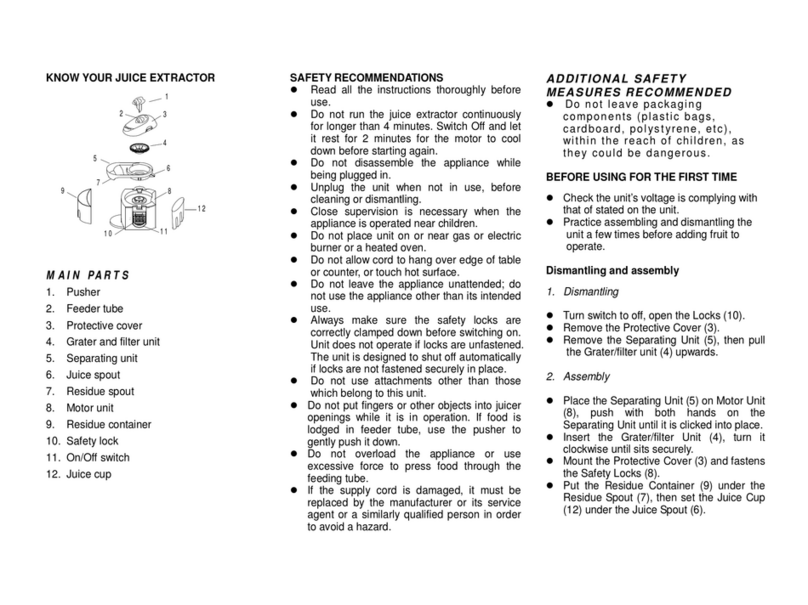
Elba
Elba EJE-1302 User manual
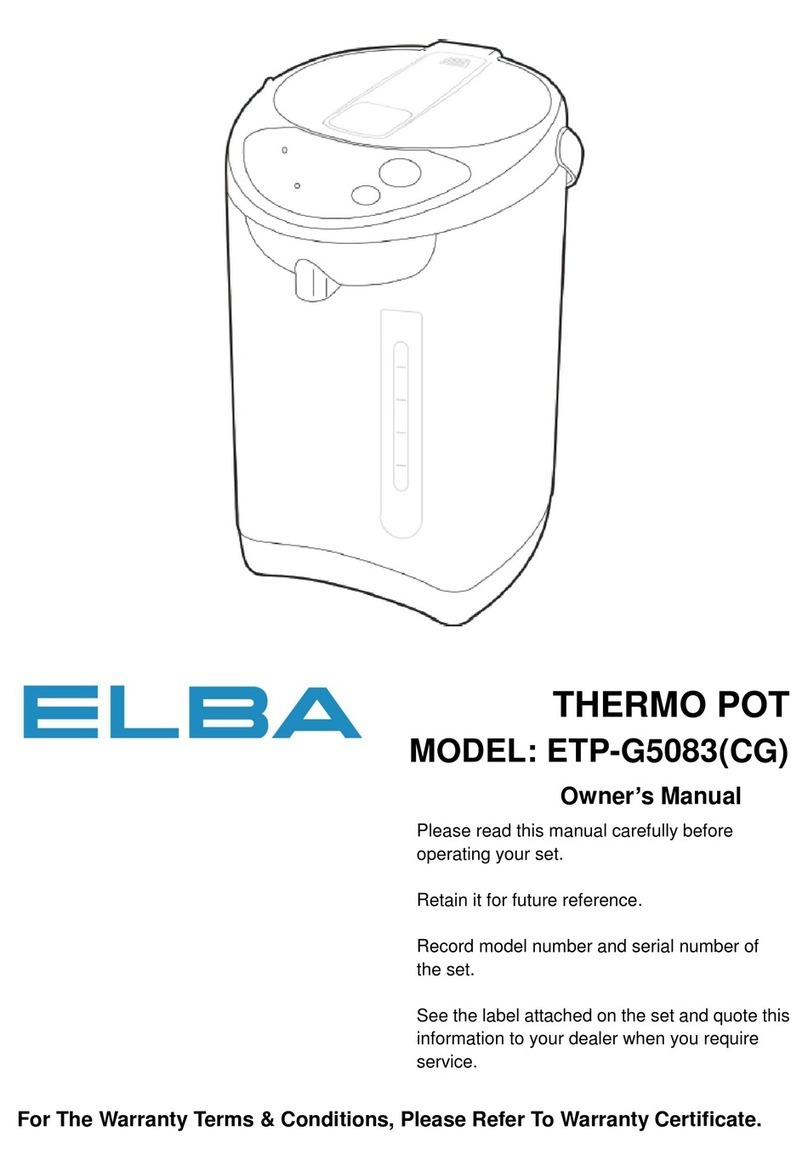
Elba
Elba ETP-G5083(CG) User manual
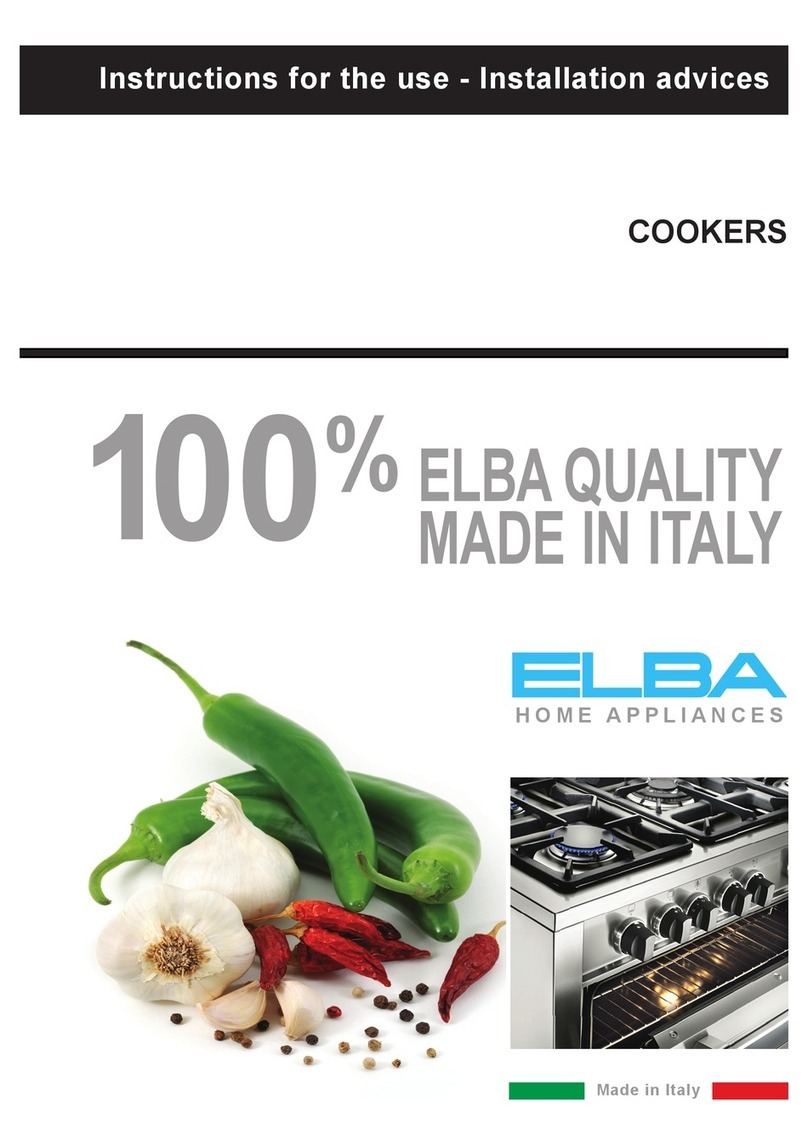
Elba
Elba E K55..220 series Installation and operating instructions
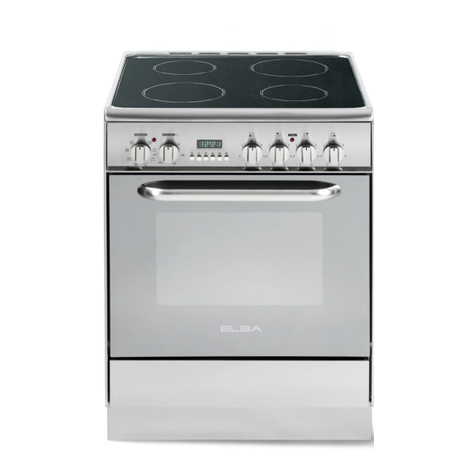
Elba
Elba S 66 X 938 User manual
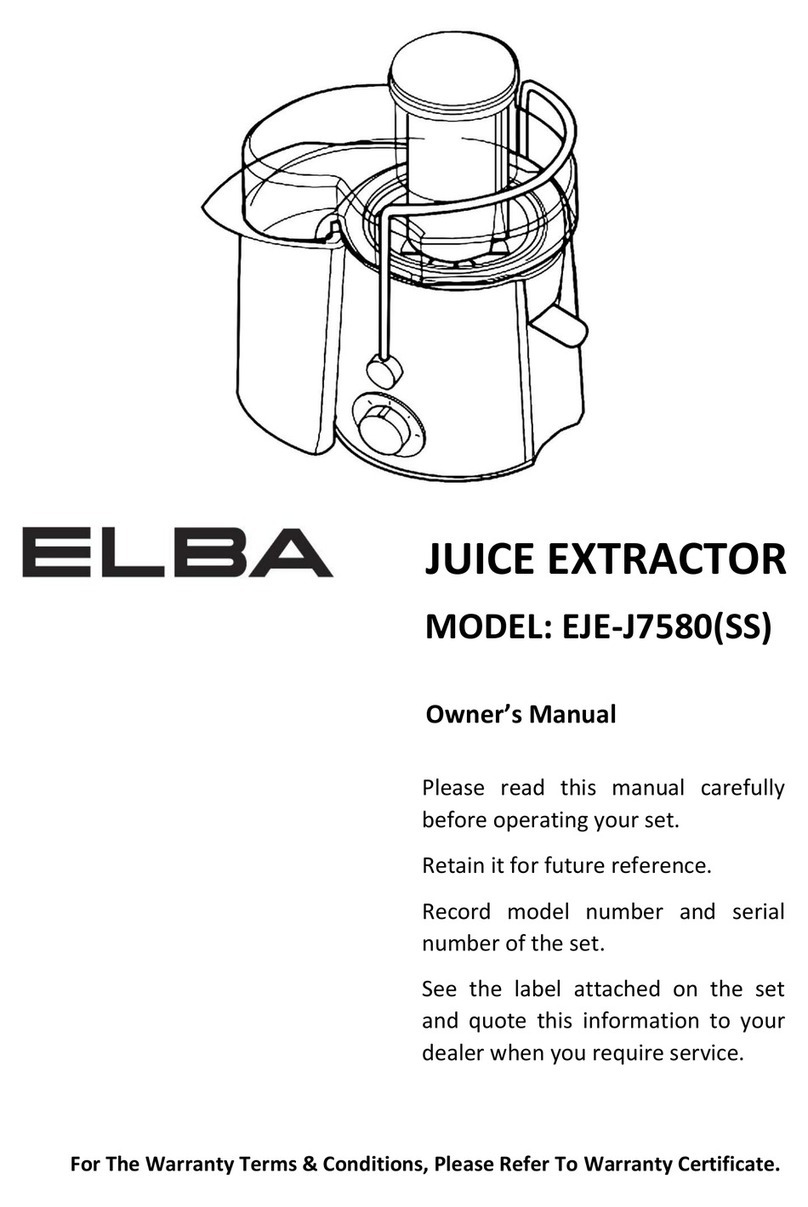
Elba
Elba EJE-J7580(SS) User manual
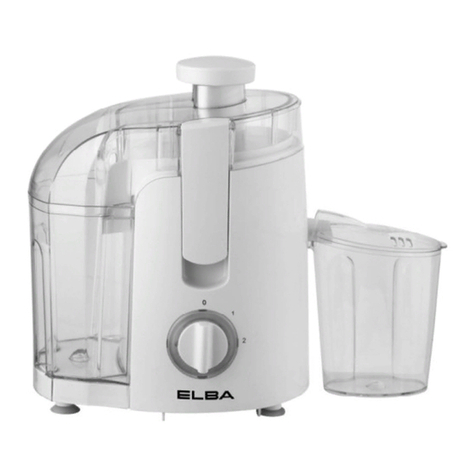
Elba
Elba EJE-A0435 User manual

Elba
Elba EMC-N9015 User manual
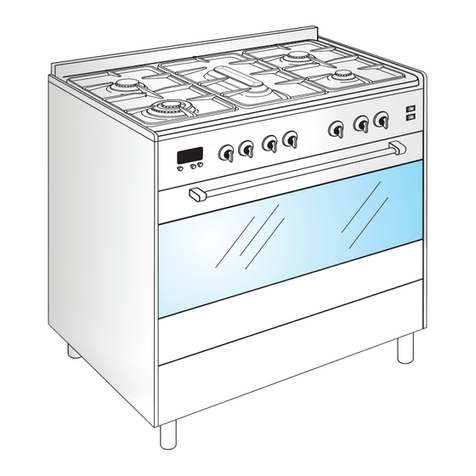
Elba
Elba EC 967F SS User manual

Elba
Elba EJE-A2050 User manual
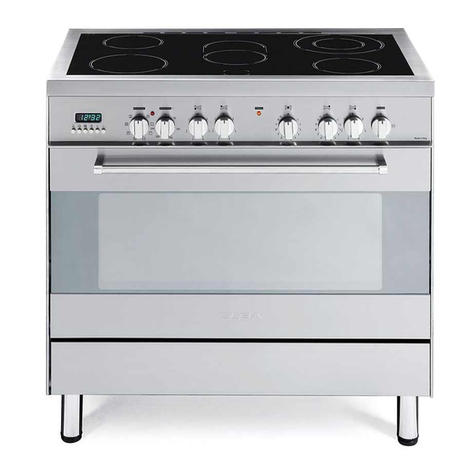
Elba
Elba N96 EX 939 S Technical manual
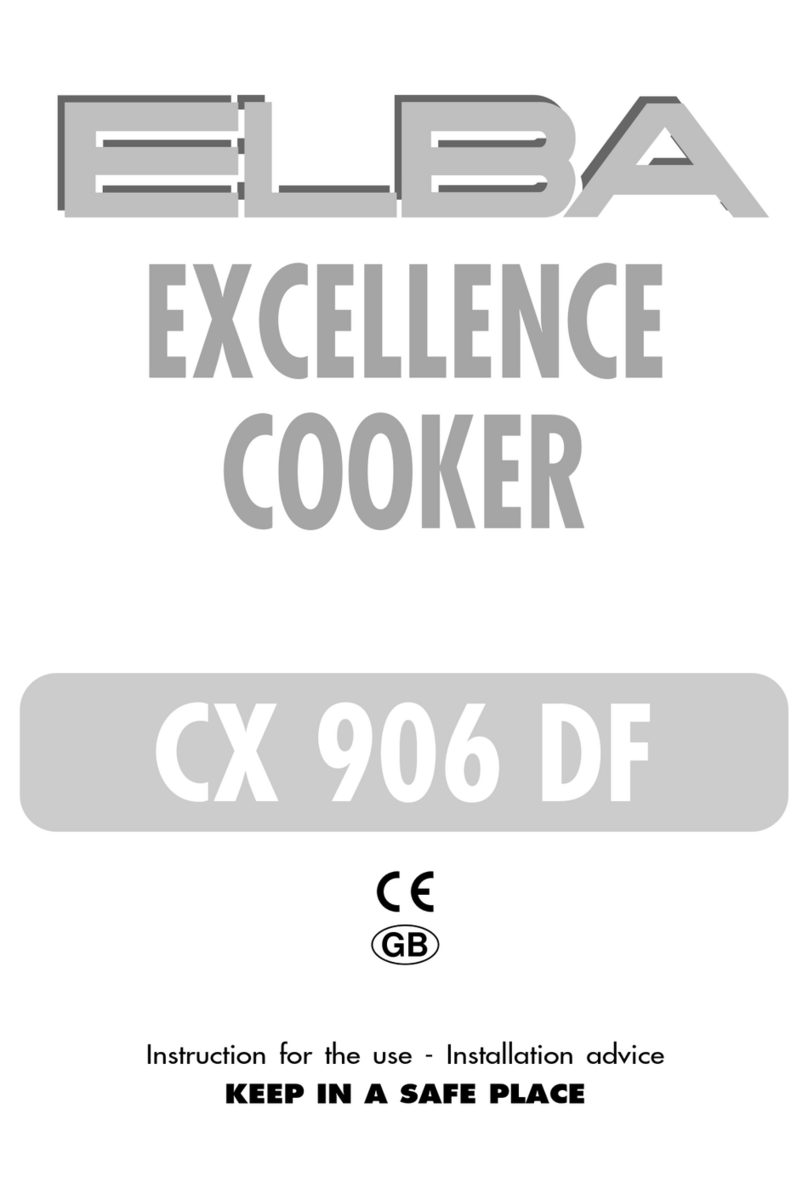
Elba
Elba CX 906 DF Technical manual
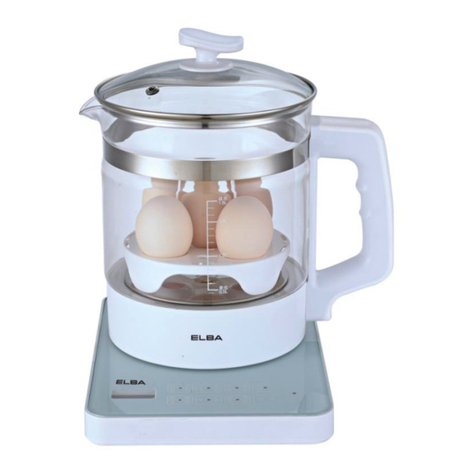
Elba
Elba EHP-E1881G User manual
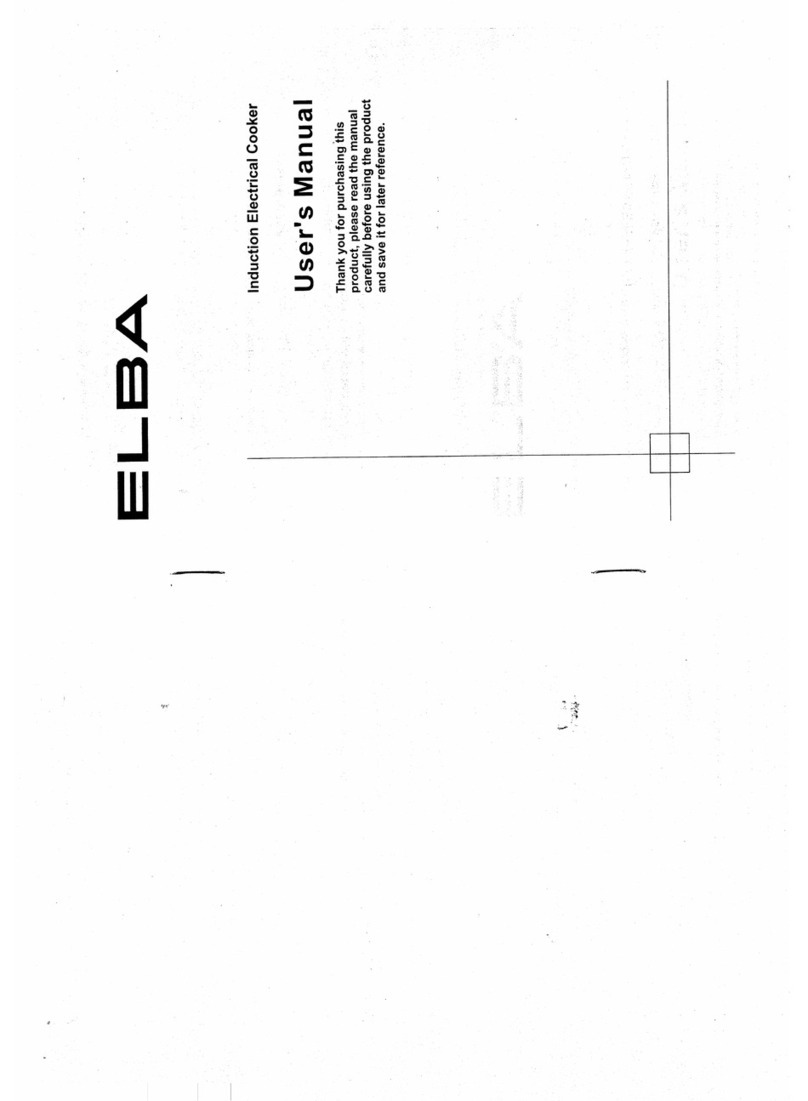
Elba
Elba EIC-1600P User manual
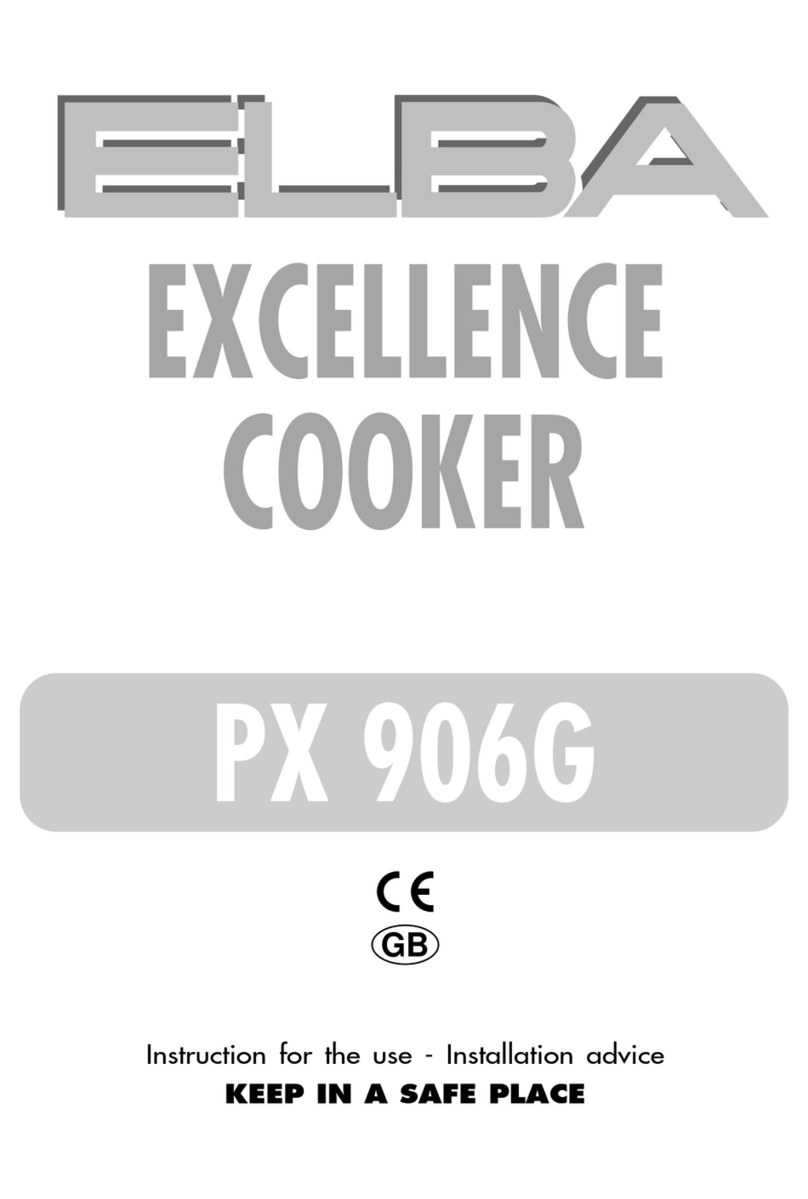
Elba
Elba PX 906G Installation and operating instructions
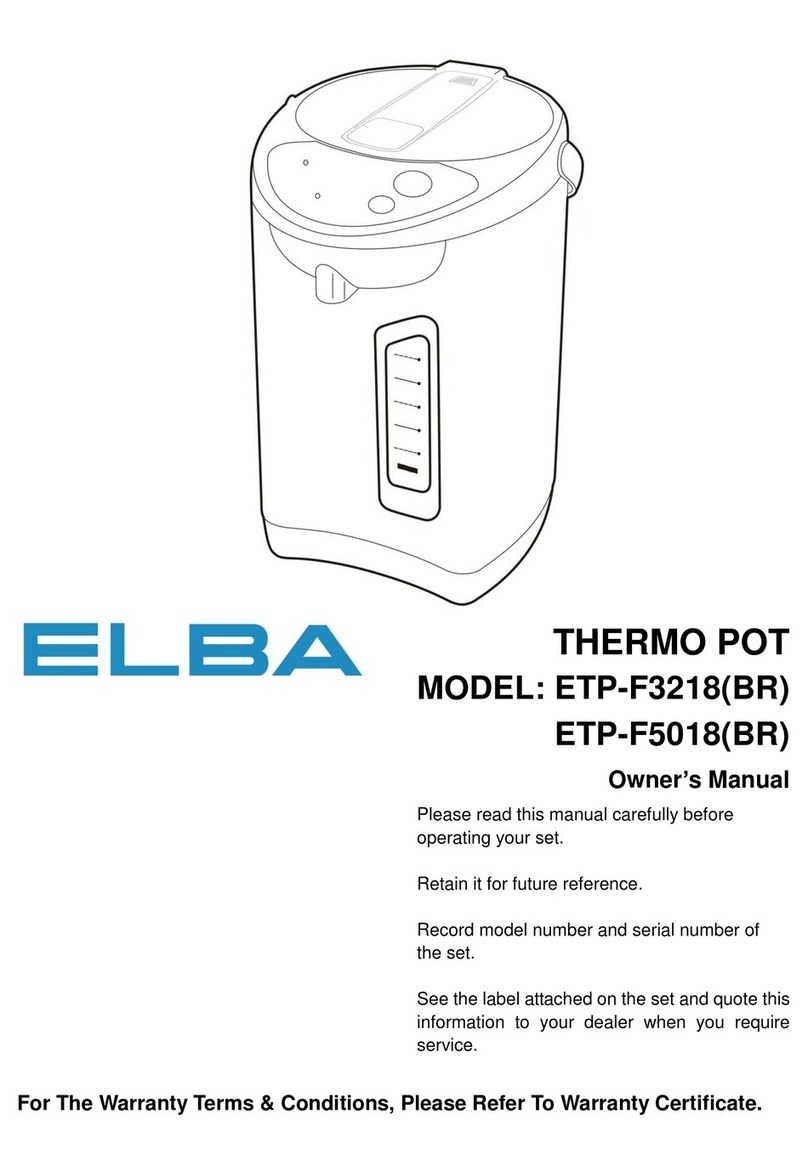
Elba
Elba ETP-F3218 User manual

Elba
Elba EMC-N5017 User manual
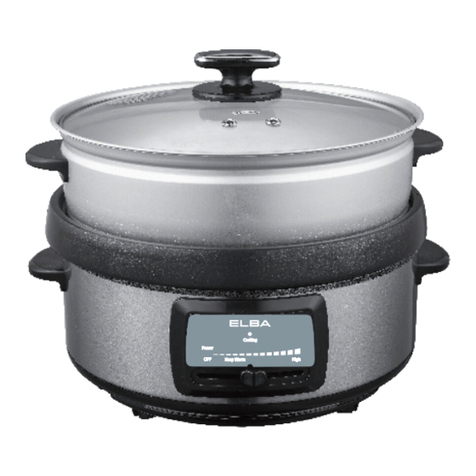
Elba
Elba EMC-F4316 User manual
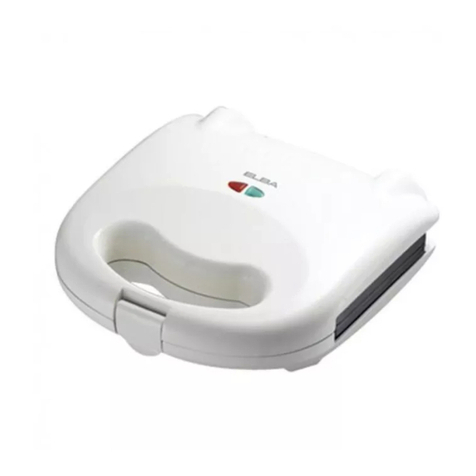
Elba
Elba ESM-2085 User manual
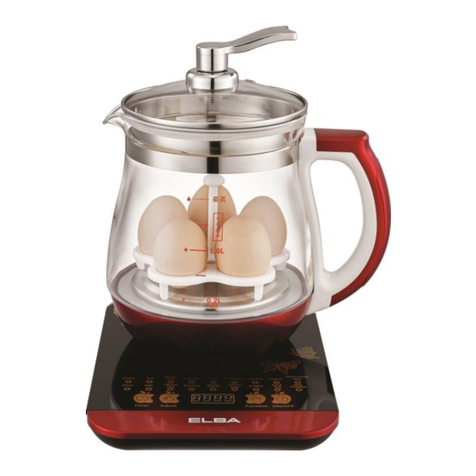
Elba
Elba EHP-G1583G(RD) User manual
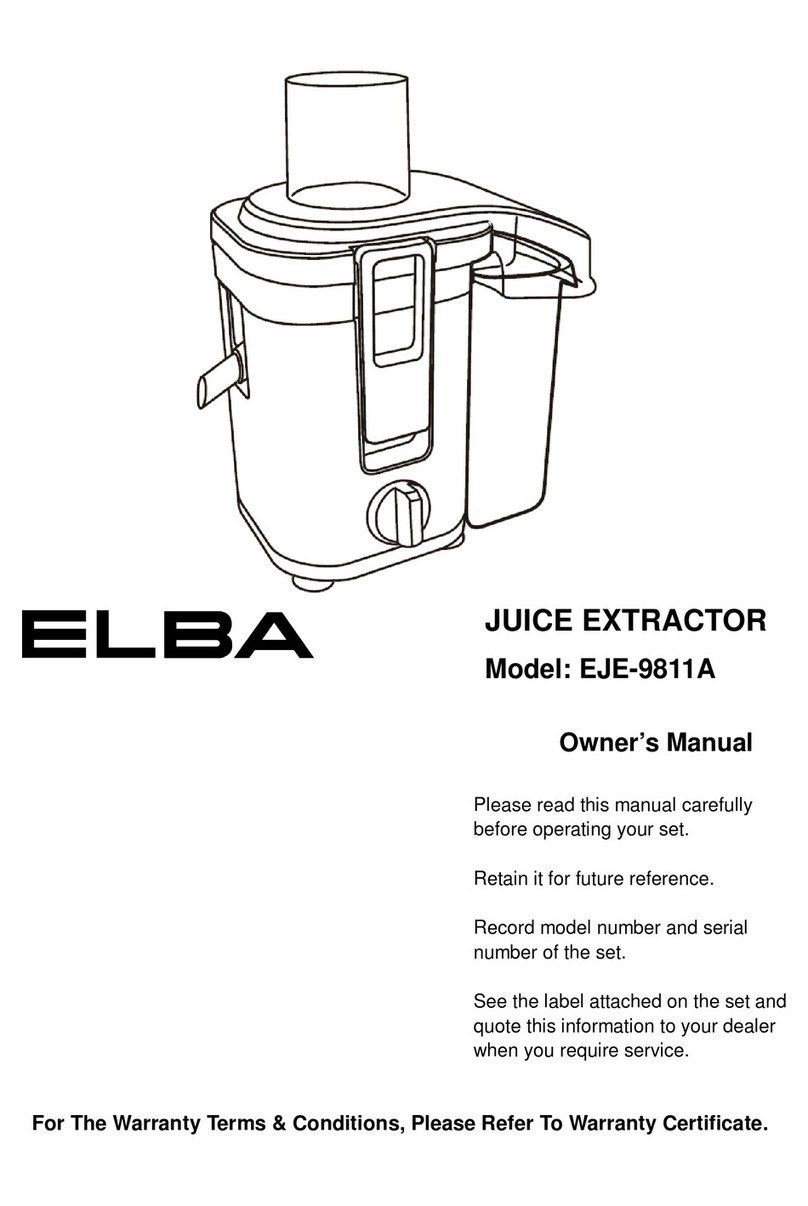
Elba
Elba EJE-9811A User manual
